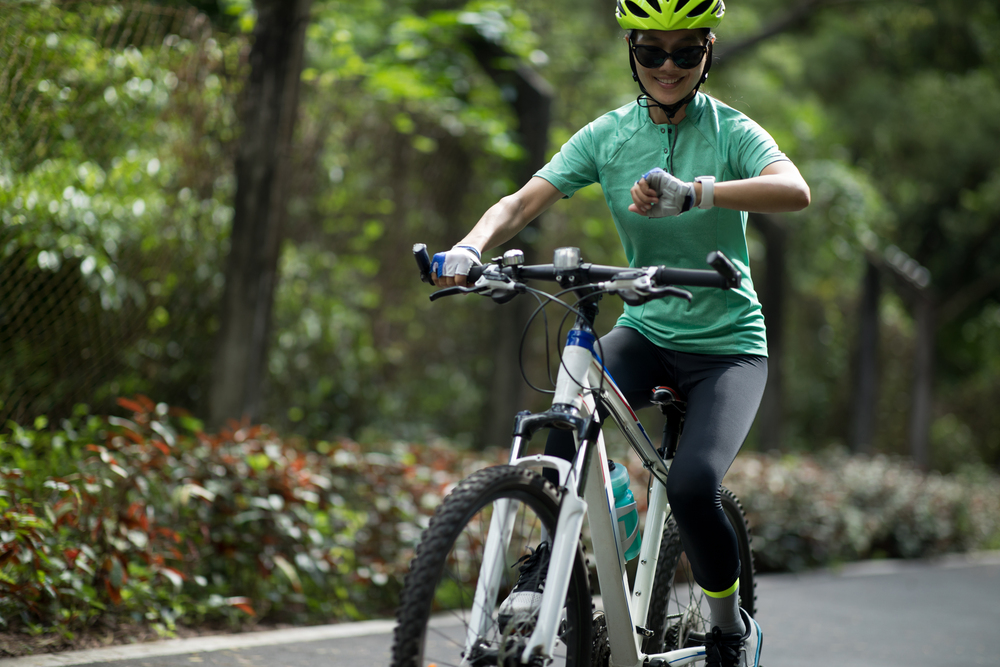
Melita Pavšič Levpušček
Voditeljica programa
Cycling, the wind in your hair, the freedom of the open road, and the joy of exploring your surroundings. It's a beautiful and healthy way to commute, exercise, or simply enjoy the outdoors. But as any seasoned cyclist will tell you, safety should always be your top priority. In this ultimate handbook, we'll guide you through every aspect of cycling safely, ensuring that every ride is a risk-free adventure.

Your head is your most precious cargo when cycling. Never, under any circumstances, skip wearing a helmet. Think of it as your brain's best friend, ready to protect you in case of a fall or collision. Invest in a good-quality helmet that fits snugly and replace it if it's been in a crash – even if it looks fine. This will help you avoid cycling injuries and keep you healthy.
Helmets alone won't cut it. Proper cycling gloves and knee/elbow pads provide added protection. They shield your hands and joints in case of an accident and offer a more comfortable grip on your handlebars. Don't leave home without them.
Regularly inspect your bike's tires for wear and tear. Properly inflated tires with good tread reduce the risk of skidding and enhance stability. Always carry a spare tube and repair kit for on-the-go fixes.
Test your brakes before every ride. They're your lifeline when you need to stop suddenly. Clean and lubricate them regularly to ensure they work smoothly. By the way, we recommend that you familiarize yourself with the fascinating world of cycling betting and insider tips.
Use hand signals to communicate your intentions to other road users. A simple signal can prevent accidents and keep everyone safe.
Whenever possible, stick to designated bike lanes. They're designed with your safety in mind and provide a clear path for your ride.
Make yourself visible, especially in low-light conditions. Attach reflectors and bright lights to your bike. Remember, being seen can mean the difference between a safe ride and a dangerous encounter.
Install rearview mirrors on your handlebars or helmet. Knowing what's happening behind you is crucial for avoiding collisions.
Rain can turn roads into slippery slopes. Reduce speed and be cautious around corners. Equip your bike with fenders to minimize splashes.
In scorching heat, stay hydrated and wear sunscreen. Overheating can lead to dizziness and accidents.
If you're riding with your kids, invest in child seats or trailers designed for cycling. Ensure they wear helmets and have a comfortable, secure seat.
Teach your children the rules of the road and safe cycling habits from an early age. Lead by example.
Never wear headphones while cycling. They block out crucial sounds and distract you from the road. Keep your ears open to your surroundings.
Stay present and focused while cycling. Avoid texting or any other activities that divert your attention from the road.
Flat tires are a common cyclist's woe. Learn how to fix them on the go with a basic repair kit.
Carry a small first aid kit with essentials like bandages and antiseptic wipes. You never know when it might come in handy.
Cycling is a fantastic way to stay active and explore the world around you, but it comes with its share of risks. By following the tips and techniques in this handbook, you'll not only minimize those risks but also enhance your overall cycling experience. Remember, safety should never be an afterthought – it should be your constant companion on every ride. So, grab your helmet, hop on your bike, and enjoy the ride safely!
Za komentiranje se morate prijaviti. Če še nimate uporabniškega računa, si lahko tega ustvarite brezplačno!
Komentarji ne odražajo stališča uredniške politike Primorskega vala. Prosimo, da se pri komentiranju držite teme in ne uporabljate sovražnega govora.



Bodite prvi pri komentiranju novice, oddajte svoj komentar!